Basic supplies
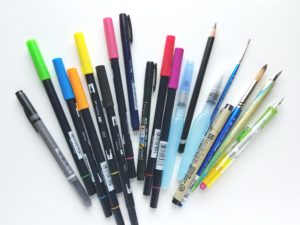
Lettering supplies can be simple or complicated. There are so many options to choose from, and each lettering site you visit will have their preferences.
If you’re a beginner, start simple. There’s plenty of time to jump into the truckload of tool options later.
For now, grab a brush pen and a pencil. A good eraser doesn’t hurt and some graph paper. Just work on form and give your muscles some practice.
I know it’s tempting to go buy all of those pretty color options. I had to hold myself back when I started. Funds don’t stretch forever and I don’t like to have things I don’t use laying around collecting dust (because I hate unnecessary clutter and do not like dusting).
Actually, I’m glad I didn’t rush out and buy every color. Because, truth be told, I discovered that I prefer lettering with a dip pen over a brush pen. Still, I think lettering with a brush pen first is a great way to explore and learn about applying pressure to a writing instrument without worrying about ink flow. One thing at a time is the best policy.
And … by the way … I do use my brush pens for various projects My preferences lean toward the smaller tipped pens.
That all said, here are the basics of the supplies that I keep on hand for lettering. I’ll include my dip pen and ink in case you want to try it, but remember, starting simple keeps you focused.
- A pencil.
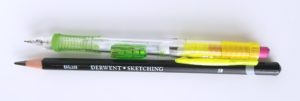
Yes, you can letter and even write calligraphy with a pencil. I actually really enjoy using a pencil and almost always start with one. Most pencils will work just fine though I wouldn’t use one that is too hard. Probably not harder than an HB, or standard No. 2 pencil. I prefer a 2B drawing pencil (B means softer, the higher the number, the softer the pencil which equals darker marks. H means harder, the higher the number the harder the pencil giving you lighter marks).
I use any pencil close by to draw and letter with. If it’s a thin, mechanical pencil, I add extra thickness to the strokes by doubling them (this is referred to as faux calligraphy. You can learn a little about it here). But you don’t have to. Any relatively soft pencil will give you varied thickness just by treating then like a brush pen and varying the pressure you exert on your tool. Try it. You’ll amaze yourself.
- Tombow Brush Pens.
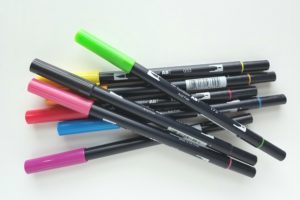
They come in many colors. I like them, but I’m glad I didn’t rush out and buy every color. They have a learning curve because their tips are spongy, making them harder to control on the upstrokes. I use them when I want something colorful and quick.
- Tombow Fudenosuke Brush Pens.
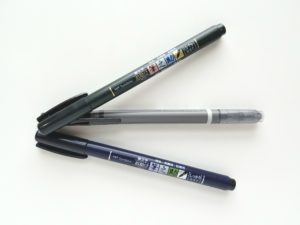
Tombow also makes some smaller markers that I love. There is a soft tip, a hard tip and a twin tip. Unfortunately, they only come in black (the twin tip also has a gray side). I think the smaller Tombows have more control on the upstrokes than the larger tipped Tombow dual brush pens.
- Micron pens.
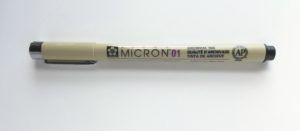
A micron pen isn’t a brush pen, but I like to use it to outline when I letter, especially if I want to color in the thick strokes of a word with watercolor or markers. It also works wonders when you need to clean up the edges of brush pen work quickly and without the fear of adding too much line to your letter.
Micron pens come in a variety of sizes and a few colors.
Extras to experiment with:
- Dip pen with a Nikko G nib.
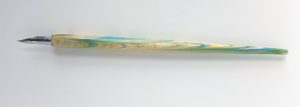
This nib gives you excellent control and thick/thin variation. Paired with sumi ink, you can create elegance and high color contrast on white paper.
- Water brush pens and/or paint brushes.
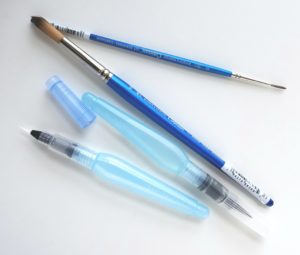
Water brushes are an excellent way to letter with watercolors or blend Tombow pen colors, as their water reservoir keeps the tips damp. They are highly portable too for on the go artsing.
You don’t need buckets of supplies to get started. Just get started. Buy the buckets when you want them instead.